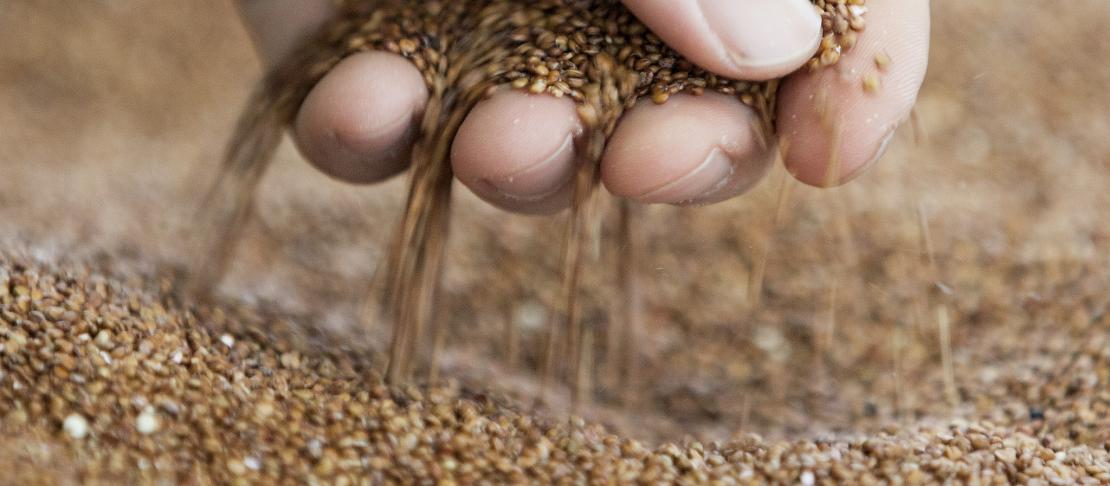Delivering cropland mitigation in regional emission hotspots through scaling cost-effective mitigation options and developing novel MRV mechanisms

Project description
Cereal production significantly contributes to global food security and environmental impacts, particularly through N2O emission. Opportunities exist to significantly reduce N2O emission from cereal production systems by improving nutrient management. This project proposes to scale out cost-effective mitigation measures for cereals in areas that have been identified as emission hotspots with significant mitigation potential. It is developing a methodology for measurement, reporting & verification (MRV) of savings that can be applied beyond the study locations.
The effort of this project builds on the Improving estimation of nitrous oxide emissions from agriculture project, which ended in 2018.
Expected outcomes
- Global donors and agricultural development organizations informed of options to support LED and agricultural climate readiness
- Technical and policy guidance to focus countries, supply chains and donors for LED priorities, with emphasis on livestock systems
- Methods for MRV of agricultural emission reductions developed with focal countries and donors
Gender and youth
Women are key players in the agriculture sector in developing countries. The project gathers sex-disaggregated data for activities undertaken and cost-benefit analysis across national, sub-national and sectoral levels. Women have been found to be more vulnerable to the effects of residue burning and other agricultural emissions, which if reduced can substantially impact the gender productivity scenario. This project aims to raise the capacity of women and youth on precision nutrient management which will promote gender-equitable N use efficiency which will eventually ensure gender and social equity co-benefits at local scales.
Further Information
For more information, please contact the project leader Tek Sapkota, CIMMYT (t.sapkota@cgiar.org).
Project Deliverables
Journal Article (peer reviewed)
Climate change and agriculture in South Asia: adaptation options in smallholder production systems
Journal Article (peer reviewed)
Effects of tillage, crop establishment and diversification on soil organic carbon, aggregation, aggregate associated carbon and productivity in cereal systems of semi-arid Northwest India
Journal Article (peer reviewed)
Learning adaptation to climate change from past climate extremes: Evidence from recent climate extremes in Haryana, India
Journal Article (peer reviewed)
Dependence of temperature sensitivity of soil organic carbon decomposition on nutrient management options under conservation agriculture in a subtropical Inceptisol
Funder report
Rapid Analysis of Green House Gas (GHG) Emission Mitigation Opportunities in Agriculture, Forestry and Other Land Use (AFOLU) Sector for Mexico
Journal Article (peer reviewed)
Climate change mitigation options among farmers in South Asia
Database/Dataset/Data documentation
Global N2O database
Journal Article (peer reviewed)
Cost-effective opportunities for climate change mitigation in Indian agriculture
Policy workshop/Dialogue report
Towards Reduced Consumption of Nitrogenous Fertilizers in Indian Agriculture: Tools, Techniques, Strategies and Policies
Journal Article (peer reviewed)
Effect of conservation agriculture on stratification of soil organic matter under cereal-based cropping systems
Journal Article (peer reviewed)
Gender and mitigation potential in the rice growing areas: A framework for equitable and sustainable climate actions in Indian agriculture
Discussion paper/Working paper/White paper
Framework for rapid country-level analysis of AFOLU mitigation options
Discussion paper/Working paper/White paper
Rapid analysis of country-level mitigation potential from agriculture, forestry and other land uses in Mexico
Journal Article (peer reviewed)
Agricultural sustainability under emerging climatic variability: the role of climate-smart agriculture and relevant policies in India
Journal Article (peer reviewed)
Achieving the sustainable development goals in agriculture: The crucial role of nitrogen in cereal-based systems
Journal Article (peer reviewed)
Identifying optimum rates of fertilizer nitrogen application to maximize economic return and minimize nitrous oxide emission from rice–wheat systems in the Indo-Gangetic Plains of India
Journal Article (peer reviewed)
Climate change responses benefit from a global food system approach
Journal Article (peer reviewed)
Conservation agriculture for sustainable intensification in South Asia
Data portal/Tool/Model code/Computer software
Dashboard for Global N2O database